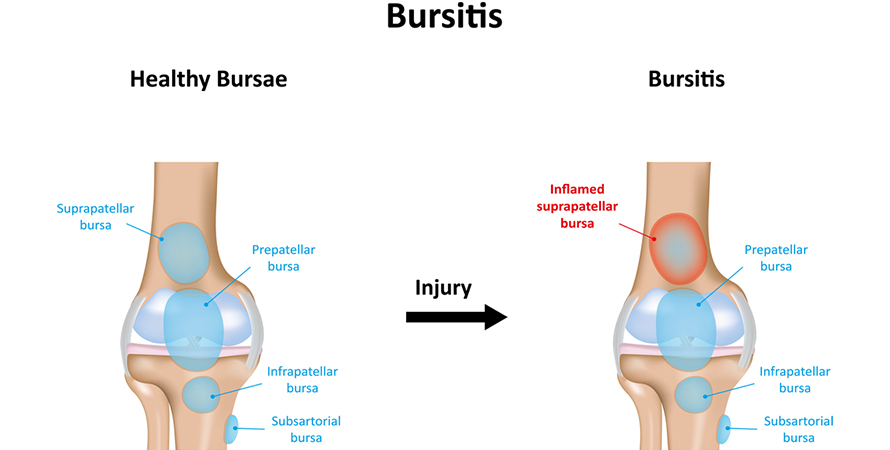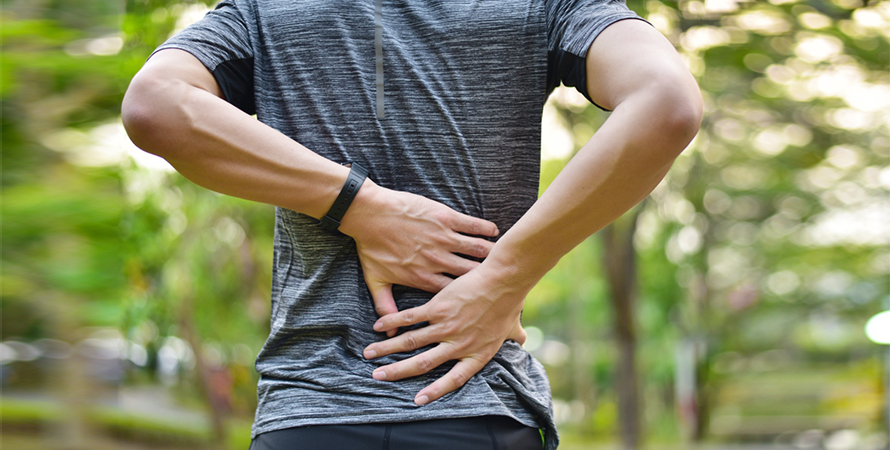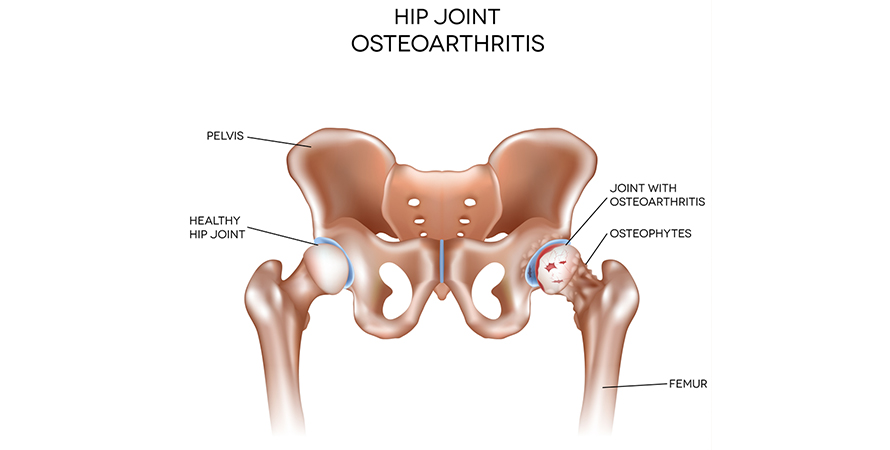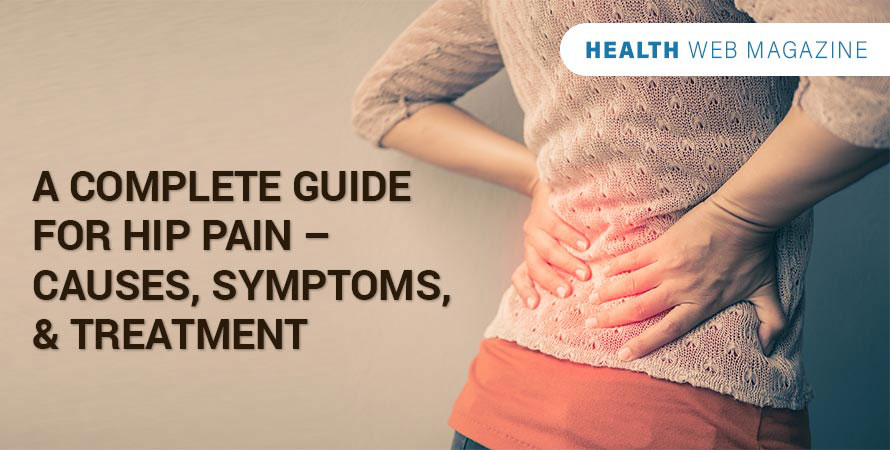Introduction
According to the British Orthopedic Association, nearly 500 out of 100,000 people suffer from hip pain each year. The number continues to rise at present as more people are becoming overweight or obese, which is one of the leading causes of hip pain. This short guide aims to decipher the common causes, symptoms, and treatments of hip pain.
What is Hip Pain? Definition of Hip Pain
Hip pain refers to any extreme unpleasant sensation felt in the upper thigh bone or pelvis. It can be primarily caused by illness, injury, or malignancy. It is not only a health issue of older people but younger ones, particularly the athletes, are also affected by it.
Reasons Why Hip Pain Occurs
The following are the commonly identified causes of hip pain:
1. Muscle Strain
Hip pain does not only involve joints and bones, but it can also be muscular. A muscle strain occurs when the muscle fibers are overstretched or overworked as a result of excessive physical activity. It is caused by muscle strain often goes away by performing stretches or low-impact exercise and does not warrant any hip pain treatment.
2. Hip Fractures
A person with hip fracture has a restricted range of motion or is unable to mobilize. Due to severe pain in the hip, the person may also be unable to bear weight on the affected leg. A broken hip, if left untreated, can lead to serious health problems, especially in older people.
3. Tendinitis
Also called tendonitis, tendinitis occurs when a tendon gets inflamed as a result of vigorous physical activity like sports. Hip tendinitis is usually common in older people caused by the degeneration of tendon fibers. Discomfort and pain due to tendinitis are felt on the anterior hip.
4. Arthritis
Arthritis is a joint disorder accompanied by hip pain and stiffness in the groin. The pain can sometimes extend to the buttocks or thighs, which worsens during inactivity or in the morning. Injury, obesity, and advancing age are the common causes of hip pain and arthritis.
5. Bursitis
Bursitis occurs when the bursa becomes inflamed or irritated. Bursa is a tiny fluid-filled sac that cushions the tendons from bones or muscles around joints. When a bursa in the hip gets inflamed, it is called trochanteric bursitis that can be an aftermath of injury, overuse, or incorrect posture.

6. Osteoarthritis
Osteoarthritis is a degenerative disorder caused by the deterioration of joint cartilage. It commonly affects people who are 50 years old and older. A person with hip osteoarthritis experiences stiffness, restricted movement, and discomfort or pain.
7. Osteonecrosis
Also called avascular necrosis, osteonecrosis occurs as a result of severe trauma and fracture, although it may be idiopathic. In osteonecrosis, there is a decrease in blood flow to the bone, causing it to break down. When osteonecrosis affects the hip, it cuts off the blood supply to the femoral head until the bone becomes collapsible. Pain associated with hip osteonecrosis increases as it progresses.
8. Pinched nerves
Hip pain caused by pinched nerves can be described as shooting, sharp, or burning. A pinched or pressed nerve can be multifactorial and may resolve on its own without medical intervention.
9. Cancer
Hip pain that is accompanied by weight loss signifies a serious health problem. Pain that occurs in the hip may be a sign of metastatic cancer. For instance, people with leukemia often experience swelling and pain that weakens the bone and leads to fracture.
Clinical Signs and Symptoms of Hip Pain
The following are the hip pain symptoms that are to watch out for:
- Pain – Depending on the underlying cause, it can be described as a blunt, sharp, shooting sensation. Pain can also be gradual or sudden, and it can be accompanied by inactivity or prolonged movement.
- Limited range of motion – People with hip pain may experience restricted mobility or loss of motion of the hip. A person may also hear a clicking or locking sound upon movement.
- Tenderness – People with acute and chronic hip problems often report tenderness in the affected region, which is one of the commonly known hip pain symptoms. If it does hurt when you press the hip, it could be there is joint inflammation or cartilage breakdown.
- Swelling – Swelling and discomfort are common hip pain symptoms that indicate inflammation or underlying health conditions. Swelling occurs when there is an increasing movement of white blood cells or fluid to the injured area.
- Limping – People who suffer chronic hip pain may exhibit limping. Limping is an advanced hip symptom and can be a sign of hip dysplasia, a condition when hip joints are dislocated or don’t fit together correctly.
- Stiffness – Stiffness is one of the biggest hip pain symptoms. Because this may involve joints, a person may experience stiffness, especially when getting out of bed, after sitting for a long time or prolonged period of inactivity.

It should be mentioned that people with chronic hip pain may be unresponsive to analgesia and may experience persistent loss of function and lack of sleep, which requires urgent referral to care. Hip pain accompanying fever and rash indicates a serious health problem and also an immediate clinical response.
Ways to Reduce Hip Pain
Hip pain can go away on its own or by taking painkillers. But if hip symptoms are persistent, it is time to see a doctor to rule out any underlying condition. The following are common pharmacological and non-pharmacological hip pain treatments:
- Regular exercise: Perform low-impact exercise. Daily walking, yoga, and swimming do not only improve function but also increase strength and reduce pain perception. A simple stretch can help relieve pain that is caused by a strain or a pinched nerve. If regular physical activity aggravates hip pain, cut down the amount of doing it. Yoga, water aerobics, Hip bridges, Hip flexion, Hip abduction, Squats & stretches are some of the best exercises for hip pain.
- Rest: Because it is commonly caused by overused joints and muscles, taking a break can ease off pain and discomfort. It is important to take it easy when doing chores and avoid twisting and bending the hips. Also, avoid sitting or standing for long periods – instead, move around in between. In addition to that, avoid sleeping on the side where there is hip pain.
- Avoid certain movements: Certain movements can aggravate hip pain. Bending, abduction, and internal and external rotation can worsen this pain and therefore, not advised. Physical inactivity and prolonged physical activity are also not advocated for people suffering from hip pain. Furthermore, avoid movements that may twist or put stress on hip joints such as golfing, running, or wall climbing.
- Physical therapy: A physiotherapy rehabilitation program helps strengthen muscles and maintains joint mobility. This hip pain treatment is the mainstay therapy for people with mild to moderate hip osteoarthritis.
- Weight control: Clinical studies demonstrate that being overweight or obese increases the chance of hip and knee pain along with hand arthritis. Gaining extra pounds not only overloads the hip joints but also progresses cartilage loss and increases stress on joints.
- Hot and cold treatments: Heat and cold-water therapy have been known as an ancient remedy for treating pain. Overtired muscles and stiff joints may benefit from heat treatment, while cold water therapy can decrease swelling and pain. The Journal of Physiology affirms that cold water immersion decreases inflammation of skeletal muscles and reduces stress response in muscles.
- Consider assistive devices: Due to pain, swelling, and limping that may accompany hip pain, using a walking stick, walker, or cane help support people in performing activities of daily living.
- Take Painkillers: Hip pain can be excruciating, and people are often advised to take regular painkillers such as NSAIDs or ibuprofen. They are over-the-counter medications and do not need a prescription. However, NSAID should be used with caution when used long-term due to their gastrointestinal and cardiovascular adverse effects. Corticosteroids can also be used as an adjunct hip pain treatment to NSAIDs or opioids to reduce inflammation and swelling.
- Surgery: Surgical intervention is the ultimate option for this treatment. A person with hip osteoarthritis may undergo arthroscopy, arthroplasty, and hip resurfacing to address pain and functional impairment.
- Get the right footwear: Shoes can have a relieving impact on hip pain. Wearing flat shoes is not recommended as they don’t provide adequate arch support. Getting the right shoes does not only alleviate pain but also improve function and mobility. When looking for the right footwear, you may consider what type of arch or level of pronation you have.
Questions Related to Hip Pain
TThere are many causes of hip pain while walking. People with dislocated joints, overused muscles, and trapped nerves can affect gait. Athletes who sustained an injury in the hip may also find it difficult to walk. Pain on the hip while walking may also signify cancer has spread.
Hip pain can be characterized as intermittent discomfort or pain from the groin or inner aspect of the thigh. Pain originating from the hip can also radiate towards the knee. On the other hand, pain or discomfort that is felt above the waistline implies a back problem.

Because the hips contain the largest weight-bearing joints, this part of the body is prone to synovial inflammation, loss of articular cartilage, and muscle weakness. Thus, it is likely that hip osteoarthritis will develop. The Permanente Journal[1] enumerates the common clinical manifestations of hip osteoarthritis, which include groin pain that may have sudden or progressive onset and stiffness in the morning or during inactivity.
Generally speaking, a person experiences hip pain as a result of overuse and wear and tear of joints or muscles in the region. As people age, bones become weaker and more fragile, and they get fractured easily during injury. Hip surgery and repetitive activities such as wall climbing can also make the bursa inflamed and intensify the pain.
Due to close anatomical proximity, hip pain is sometimes felt as back pain. Joints in the hips are supported by muscles, tendons, and ligaments that may also network the back. Depending on the extent of the injury, people who have fallen on their hips can also affect their back, producing back pain. However, groin pain is a tell-tale sign that the hip is the source of the pain.
Conclusion
Hip pain is not only a degenerative health issue, but it can also affect people of all ages. Age, injury, illness, and infection are among the common causes of hip pain but may also involve muscles and nerves.
While hip pain symptoms can vary greatly, pain in the groin is the hallmark clinical manifestation of hip pain. People are advised to seek medical attention and not to self-diagnose the root cause of it. There is no single cure for hip pain.
Hip pain treatment can be done through conservative management and often does not require surgery. Fortunately, there are ways to reduce hip pain, and they are effective.







